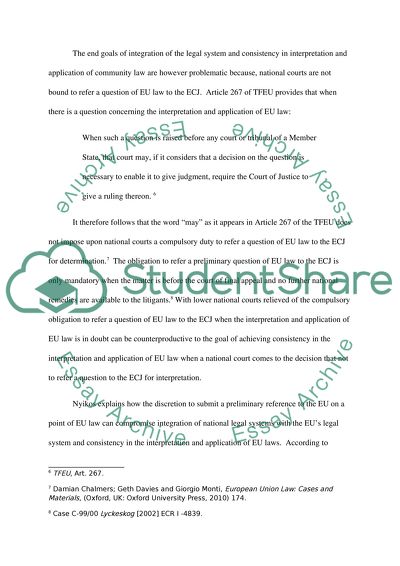Cite this document
(“The Functions of Article 267 of the Treaty on the Functioning of the Essay”, n.d.)
Retrieved from https://studentshare.org/law/1439151-ypthe-preliminary-ruling-procedure-which-is-also
Retrieved from https://studentshare.org/law/1439151-ypthe-preliminary-ruling-procedure-which-is-also
(The Functions of Article 267 of the Treaty on the Functioning of the Essay)
https://studentshare.org/law/1439151-ypthe-preliminary-ruling-procedure-which-is-also.
https://studentshare.org/law/1439151-ypthe-preliminary-ruling-procedure-which-is-also.
“The Functions of Article 267 of the Treaty on the Functioning of the Essay”, n.d. https://studentshare.org/law/1439151-ypthe-preliminary-ruling-procedure-which-is-also.


